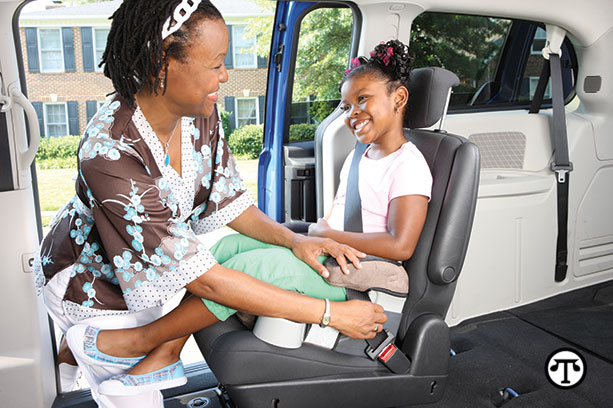
(NAPSI)—There’s good news, bad news and great news about children and safety on the road.
The good news is that car seats, booster seats and seat belts save lives. In fact, in 2015, car seats saved the lives of an estimated 248 children under age 5.
The bad news is every day in America, too many children ride in car seats that have been installed incorrectly, or are riding in the wrong car seats for their ages and sizes. Some children even ride while completely unsecured. According to the U.S. Department of Transportation’s National Highway Traffic Safety Administration (NHTSA), 59 percent of car seats are not installed correctly. Every 33 seconds in 2015, a child under the age of 13 was involved in a crash. On average, two children under 13 were killed and 319 children were injured every day in 2015 while riding in cars, SUVs, pickups and vans.
The great news is that when used correctly, car seats reduce the risk of fatal injury by 71 percent for infants and by 54 percent for toddlers. For infants and toddlers in light trucks, the corresponding reductions were 58 percent and 59 percent, respectively. By law, all children must be buckled up in appropriate car seats or booster seats while riding in cars.
Keeping Kids Safe
During Child Passenger Safety Week, September 17−23, 2017, many communities will have Certified Child Passenger Safety Technicians on hand to provide training on how to use car seats, booster seats and seat belts for children. While most parents are confident they’ve correctly installed their child’s car seat, many have not.
What’s more, according to NHTSA data, in 2015, about 25.8 percent of children 4 to 7 were prematurely moved to seat belts, when they should have been riding in booster seats. Technicians can also help educate consumers about choosing the right car seat for their child, the importance of registering that car seat with its manufacturer, and what to expect if the seat is subject to a safety recall.
Anyone driving with a child in the car should read and carefully follow the installation instructions included with a car seat as well as the vehicle owner’s manual.
NHTSA recommends keeping children in rear-facing car seats as long as possible, up to the car seat’s top height or weight limit. Then, it’s time for a forward-facing car seat with a harness and tether. After outgrowing this car seat, the child should ride in a booster seat until he or she is the right size to use a seat belt safely. For a seat belt to fit properly, the lap belt must lie across the upper thighs, not the stomach, and the shoulder belt should be snug across the shoulder and chest, not the neck or face.
Whether they are in a car seat, a booster seat, or buckled in their seat belt, children under 13 should always ride in the backseat because it’s safer there.
Learn More
Parents and caregivers can view more information on car seat safety and locate a certified child passenger safety technician at www.NHTSA.gov/TheRightSeat.
